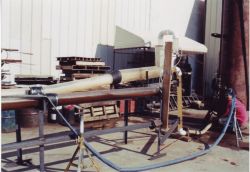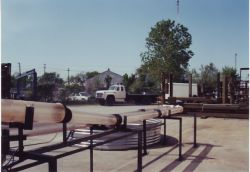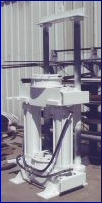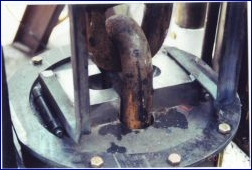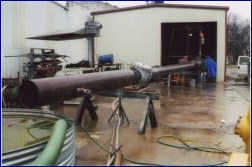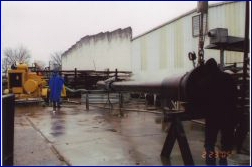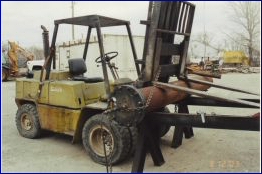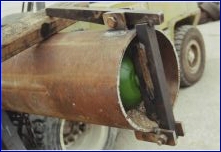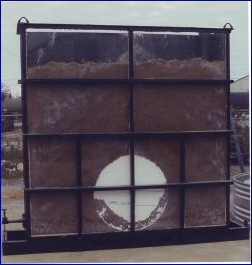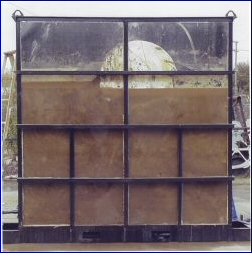|
BKW
has the capability to create designs for new equipment to suit the needs of
pipeline contractors and transmission companies. When companies have a problem, BKW is
contacted and conceptual designs are submitted for approval. Following acceptance, the project goes into
design, fabrication, testing, and submitted for service. A partial list of projects is shown on this
website.
BKW Mono-riser Slug Catcher -- Comprehensive tests were conducted on
a scale model of a slug catcher using a single riser for venting
gas. Tests were simulated for a large range of gas throughputs and
gas/water ratios. Modifications to the slug catcher model were
conducted to expand the variable volume throughputs and gas/water
ratios.
In addition, modifications were made to dampen the violent
effects of the pig entering the receiver. The results of the
testing proved beneficial in the construction of a slug catcher
located in Illinois.

Chain Jack
– A Cook Inlet, Alaska, job required a 250,000 lb. capacity chain
jack to pull flow lines through J-tubes located inside offshore
platform legs. The chain jack was designed, fabricated, tested and
used successfully on the job. The unit has since been rented to
other contractors working in Cook Inlet.

Pig Testing
– BKW has tested multiple diameter pigs to determine efficiency
when going through different size pipelines. In some instances, air
was used to push the pig, and in other instances, water was used.
The pigs were furnished by various pig manufacturers and a report
was submitted that graded each pig. BKW has also tested pigs and
pig traps that were involved in incidents that resulted in injuries
or death. The tests were conducted to determine the cause of the
incident.

Buoyancy
Control Tests – BKW investigated the cause for flotation of 40
miles of 36-inch natural gas pipeline in North Dakota. The pipeline
traversed an area consisting of sugar sand with a high water table. The
investigation included a study of the soil hydraulics, sugar sand
characteristics, experience of local inhabitants and a soil test box.
The box shown below consisted of 8' x 8' x 2’' plywood with a Plexiglas side. Soil from
the pipeline area was used along with a 2' long 36" pipe pup with sealed
ends. The box was vibrated to simulate
construction equipment and farm tractors, resulting in the pipe floating to the
surface in 8 minutes. The investigation concluded that vibrations due to farm equipment and trucks
caused the pipe to float.
|

